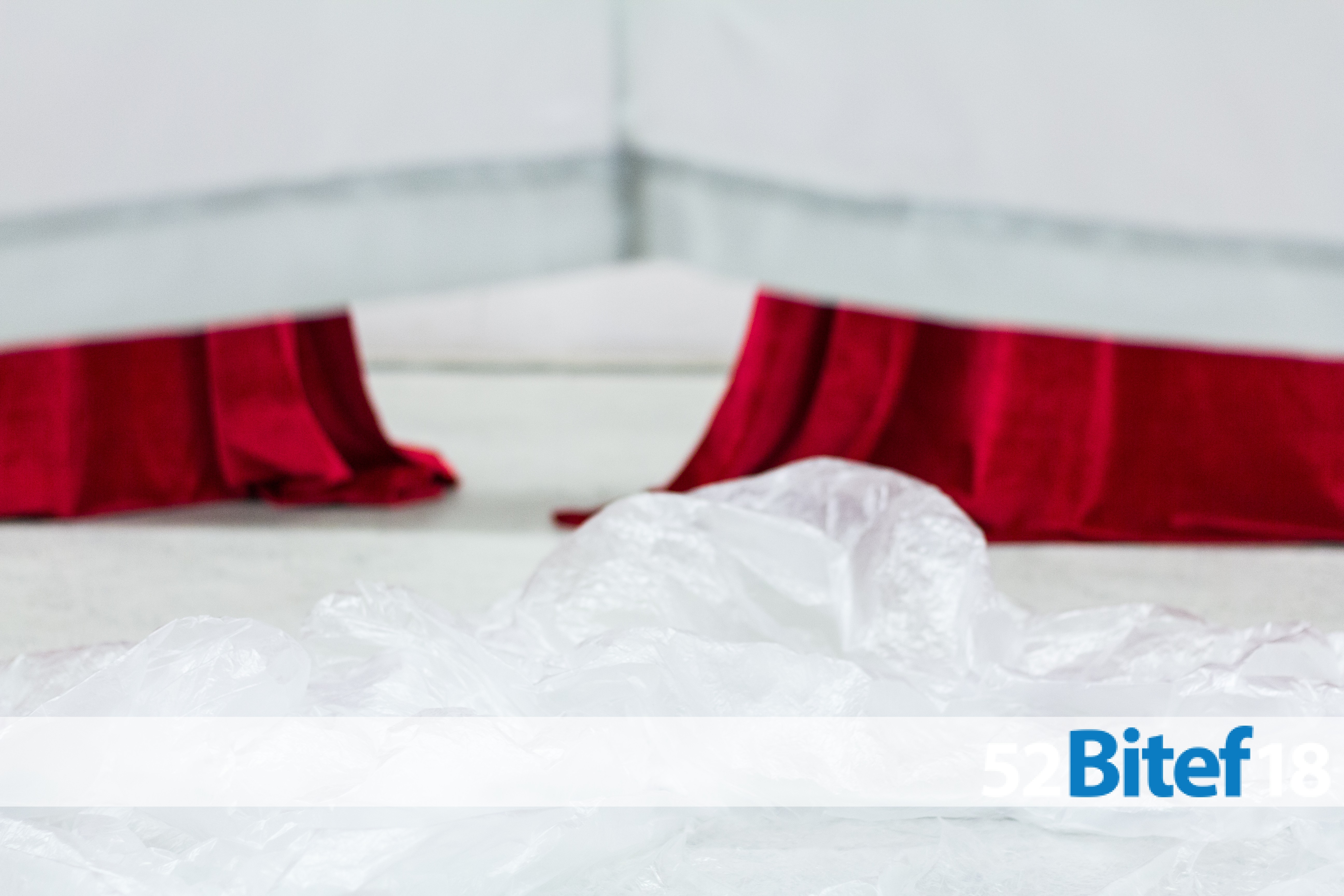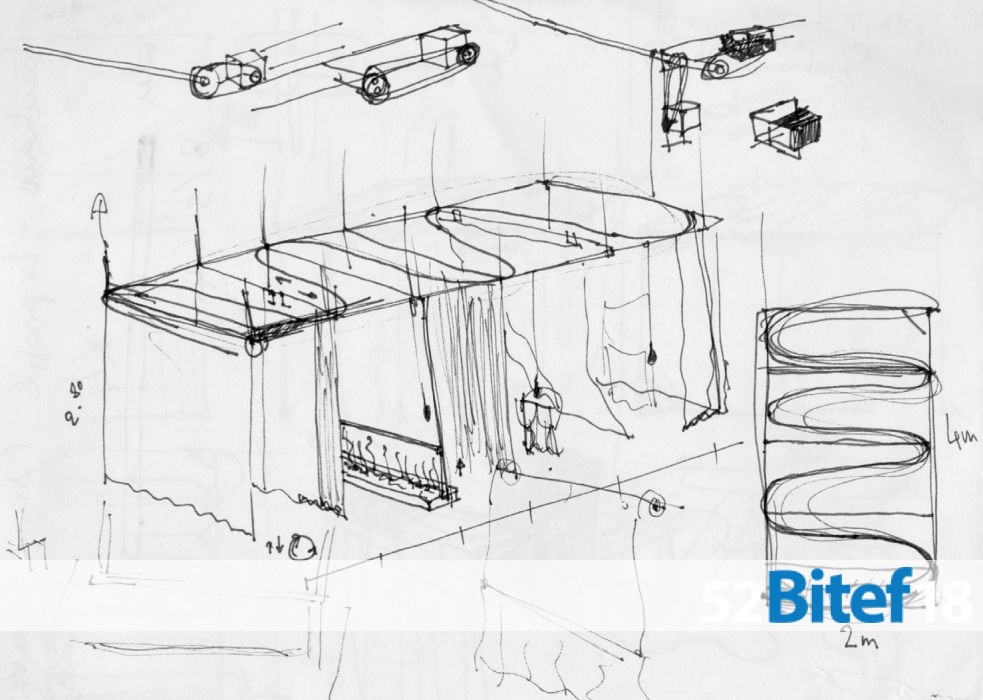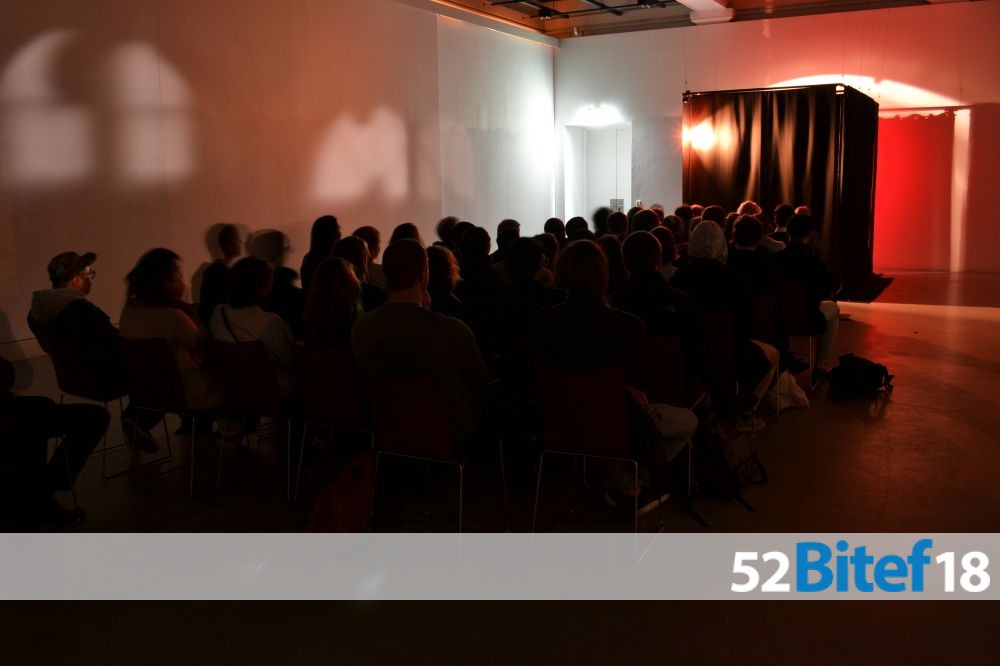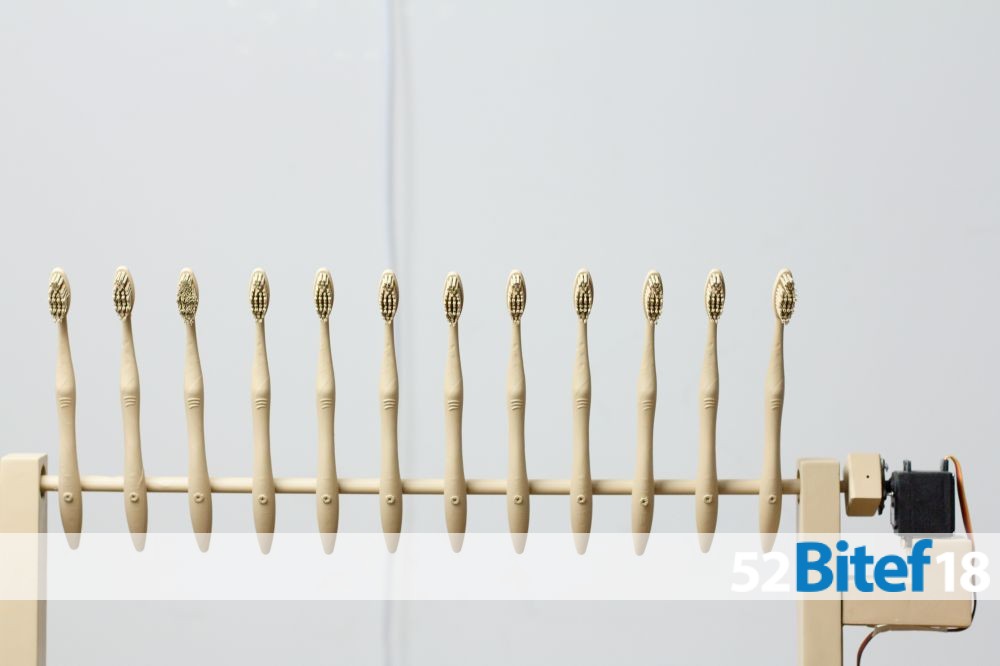
Staging absence, Irena Kukric, installation view, 2016, image by Julian Hespenheide
Staging Absence is an 8-minute long play, made of curtains and is entirely actuated by stepper and servo motors which are animating the curtains and the light. The play with curtains is not a linear story based on a text. It is not carrying a message that you should read and interpret in one certain way. It is closer to music or a dance experience where the movements of the curtains, the aesthetics of the different ones, the mechanics that seem to bring the curtains ‘to life’ explore the spaces in-between. The intention is to search for an authentic sensation in every individual.
Even though the whole performance Staging Absence is automatic and mechanical, the objective is to deal with these present absences through a sense of melancholy, fantasy and associations, finding in them some sort of fulfillment as opposed to mechanical repetition and emptiness. It is searching for the intimate and human through the means of mechanical and non-human. As the curtains open and close, one after the other, we stop expecting much to appear behind. Since they move slightly differently or you hear a certain melody or a recorded voice, a curiosity of sorts still follows and even though the last one, the one with the most promise, the red velvet theater one, opens and there is nothing behind, one went through some kind of thought or emotional process to get there. This is reflecting our own movement through time, period after period, event after event, day after day.
Without a human body controlling the curtains or a human actor delivering the performance, we encounter a distance which allows the audience to experience a different sort of play that would be more in line with music, cinema or choreography. The audience is left to interpret these visuals, snippets, movements and sounds. The potential of this interpretation is the true value of the play.
The same applies for the 5-minute play “Happy Days or staging Beckett with 11 motors” which is based on Beckett's play “Happy Days” and deals with the dullness of the repetition of daily rituals. Main characters of Beckett’s play are Winnie and Willy, a married couple. They are constantly present on the stage that is covered with send and resembles a beach in unbearable heat. Winni is buried until her waist in sand and Willy is lethargically sitting in a hole from which he could move, but he never does. The beginning and the end of the day is marked by a bell ring. Winnie wakes up, goes about her day using objects she takes out of a black bag next to her that help her to go through her daily routine. She is constantly talking enthusiastically, despite her miserable condition. He occasionally reads the titles from the Newspaper. These objects or rather props from the play take the stage and overshadow the performer, as the objects of the rituals survive on their own and become performers themselves. Within the play staged with motors, the behavior of the objects ranges from the harmonic order to the chaotic and random movements. Toothbrushes pray, knives are killing time, an umbrella is opening and closing. The absurd is only emphasizing the duality of despair and humor of daily routines.
Whatever progress has been made in the field of art, film, performance, and theater, the boundaries of the respected fields have, for the most part, surprisingly stayed intact. My own practice and works such as “Staging Absence” and “Staging Beckett with 11 motors” is yet another attempt to blur these borders. The question often arises on whether they are a performance, a play or an installation. This as a gray area where the experience of the audience is the most important. What category they stand in is not as significant and is perhaps yet to be defined. They can be performed in a gallery, in a theater as well as in an exterior. These installations can be experienced differently depending on the set space, but also on the subject watching it. The audience within the visual arts, design or theater, tend to interpret and value work in their own specific ways and this is yet another reason for the place “in-between” and the advantage of the non-categorized status. It is really the audience that takes away that to which it can relate. For a valuable experience, the audience is also responsible to a certain extent. The accomplishment of giving a meaningful interpretation of aesthetic experiences depends upon our ability to accept the seeming as real.
Irena Kukric



